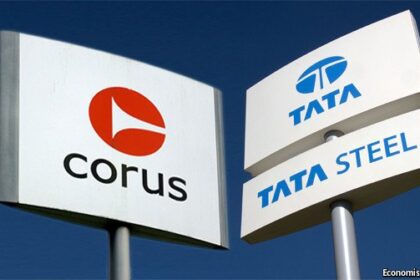
Have been reading the biography of Ratan Tata and there is a whole chapter dedicated to the Corus takeover and various challenges that were encountered and rather still being encountered in this mega deal. Was interesting to read the back ground strategies that were adopted since I remember following this deal when it was shaping up around 2007 and it was then probably the biggest acquisition done by an Indian company and what made it even more interesting was it was all cash deal. This move was also a testament to Tata Steel’s ambition to become a global steel powerhouse and leap forked it into the fifth largest steel producer in the world while also opening several new product segments for Tata Steel in which they weren’t present till then,
One of the first significant challenges Tata Steel faced was the aggressive bidding war against Brazilian company CSN (Companhia Siderúrgica Nacional). The price of Corus surged from an initial offer of $7.6 billion to a staggering $12.1 billion as Tata Steel engaged in a bidding battle. Was also interesting to understand the background plots and sub plots that was done including the various connections established to address various likely scenarios. There were also several bidding strategies adopted to confuse CSN which enabled Tata steel to finally clinch the deal in its favour.
To finance the acquisition, Tata Steel relied heavily on debt, which significantly increased its financial leverage. The book also gives a detailed Insite on how funding was arranged considering various combinations that played out and also the options that were kept open considering the situations which could have developed during the bidding period and the preceding period when the same was being played out. This portion was of interest to me particularly because one of the first companies that I worked for which had established itself as the market leader in the consumer durables space and perhaps the most aspired brand in this space lost out because of bad fund management during its expansion phase to other segments. This portion also serves as a good learning on the various options to be kept in mind and how moving fast according to the evolving situations like the one playing out now with the Trump induced barriers helps give you a better advantage over the long term.
The timing of the acquisition could not have been worse, as the global financial crisis suddenly struck in 2008 which wasn’t expected when the acquisition took place.. Steel demand plummeted, prices crashed, and China started dumping steel into the European markets all of which made the situation even worse.
The steel industry is cyclical, and demand fluctuations significantly impact profitability. In the years following the acquisition, demand in key European markets remained volatile, forcing Tata Steel to frequently revise its strategies. This unpredictability made it difficult for Tata Steel to stabilize Corus’ operations. There are also detailed write up on the various strategies that were adopted including working out different combinations with the various governments at even the Prime Minister level. Like I said earlier exploring various options to meet totally unexpected situations creates opportunities which we wouldn’t have even seen otherwise.
The biggest advantage of Corus was the specialised product categories that they were into and there is also
By the mid-2010s, it became evident that sustaining Corus’ European operations in their current form was financially unfeasible. Tata Steel had to undertake several divestments, selling off parts of its business to reduce losses. The most notable was the attempt to sell its UK operations in 2016, though a full exit never materialized.
I was also reading two days back about new changes which are being undertaken in the Tata Steel Netherlands operations which also clearly shows that in todays world there is no real stable state which can run over long periods and things will need to be continuously looked at and redone to stay relevant.
Lessons from the Tata Steel-Corus Acquisition
Despite the numerous challenges, the Tata Steel-Corus acquisition remains an important case study in global M&A. Some key takeaways include:
- Timing is Crucial: Making large acquisitions at the wrong time—such as just before a global recession—can lead to severe financial distress. But then no one really saw the 2008 crisis coming. So there will always be such challenges which will come up and we will need to always keep options open to meet such situations as they come.
- Due Diligence Matters: A deeper assessment of Corus’ operational challenges and market viability could have helped Tata Steel better prepare for post-acquisition realities. Clearly shows that all details cannot be understood from excel sheets and data and the story behind the data will need to be understood.
- Cultural Integration is Key: Understanding and integrating different corporate cultures is critical for the success of cross-border acquisitions. Its important to keep in mind that Tata Steel was much smaller than Corus at the time of acquisition.
- Market Adaptability is Essential: Companies must remain agile in the face of changing economic conditions, industry trends, and regulatory environments many of which cannot often be predicted till they happen.
- Debt Management is Critical: Over-leveraging can be dangerous, especially in cyclical industries like steel, where demand and prices fluctuate.
The Tata Steel-Corus acquisition was a bold move that showcased India’s growing ambitions on the global stage. However, the challenges Tata Steel faced underscored the complexities of international business expansion. While the company has taken significant steps to mitigate the losses and optimize operations, the acquisition remains a cautionary tale of how even well-intended deals can face unforeseen headwinds.
For business leaders, analysts, and aspiring entrepreneurs, the Tata Steel-Corus case serves as a powerful lesson in strategic planning, risk assessment, and the realities of cross-border mergers and also the various other learnings which come to your existing operations including knowledge, technology and even specialised channels. As Tata Steel continues to navigate the evolving global landscape, its experience with Corus will undoubtedly shape its future business decisions.
What are your thoughts on this acquisition? Was it a strategic misstep, or was it a necessary risk in the pursuit of global expansion? Drop your thoughts in the comments below.
Follow me for more insights on breaking down mergers and acquisitions. Check out my page Rejo Business Bytes or visit rejofrancis.com for more!



